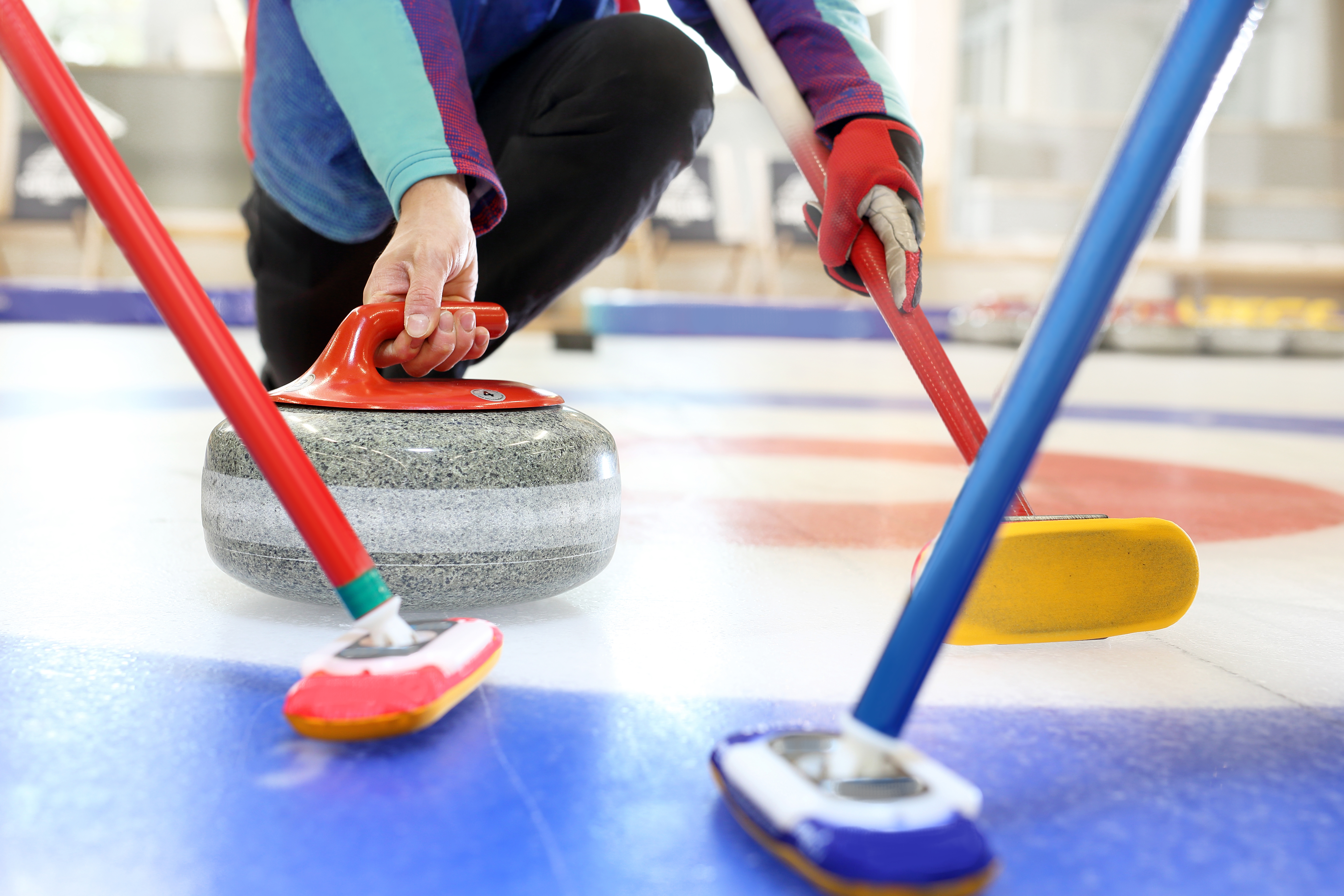
Creating the Right Ice: Curling in Orlando
From AHR Today 2020 Newsletter
No ice is perfect, but a subpar curling ice surface can affect the game.
About 20 miles north of the Orange County Convention Center—the home of the 2020 AHR Expo—the Orlando Curling Club works within its limitations to create ideal playing surfaces for their sport. The club of about 60 members plays at the RDV Sportsplex Ice Den for weekly games year-round.
Jordan Cuoco, the club’s “ice guru,” said the team takes about 45 minutes to convert the arena ice to curling ice. This includes two resurfacing paths and other curling prep.
“Curling ice must be made with extreme attention to detail, as any imperfections in the ice are sure to affect the play of the stones and will be readily noticed by players, spectators and ice makers,” said Cuoco, who is an environmental chemist at an environmental laboratory. “No ice is perfect, but we strive to give the competitors the best ice possible so they can compete at the highest level possible.”
The ice quality affects the game, said Cuoco. The cleaner the ice, the faster the stone travels on the ice.
“The (ice) quality is very important to good quality play,” he said.

No ice is perfect, but a subpar curling ice surface can affect the game. From pebbling the ice to preparing the ice,
curling ice surfaces differ from hockey playing surfaces.
Credit: iStock/robertprzybysz
The Process
The ice setup process starts with the arena’s ice resurfacing machine technician doing a wet pass and a dry pass over the ice. Immediately after the ice near the wall has been cut dry, the team removes that game’s curling stones from the refrigerator units next to the ice sheet. The players place their stones on the ice near the boards, which are the surrounding walls, to cool as much as possible before the game starts.
The club takes over the ice when the ice resurfacing is complete, said Cuoco.
“We mop the ice with a large cotton mop to remove pieces of ice and snow that have been left behind by the resurfacing machine and to dry the ice further. If we skip this, it would result in an irregular pebble in the following step,” he said.
Then the pebbling starts. Pebbling is the most apparent difference in curling ice and other ice playing surfaces such as hockey and ice skating.
“Pebbling is the process where technicians employ a water pack with a hose and a head attached that distributes an amount of water drops onto the ice surface where they quickly freeze into the pebble-sized droplets for which they are named,” he said.
The team pebbles the ice with a coarse pebble followed by a finer pebble, which will provide the stones with the surface required to get that signature “curl action” during play. The club then drags rocks over the fresh pebble. This breaks off any irregular pebble and high peaks to create a more uniform playing surface, according to Cuoco.
The club then dry-mops the ice surface and sets up hardware and necessary game items before the curling surface is ready.
“What we do for our ice is not ideal though, as we have yet to come up with a more perfect agreement with our arena as far as producing better curling ice. Whether it is labor or time there is more that we could and would do to make better curling ice for our patrons,” he said.
Curling Ice vs. Hockey Ice
Dedicated curling ice and arena ice have a few differences, said Cuoco.
Curling ice is usually made from scratch each season because the club has most likely taken down their ice for the summer, he said. To make the ice, water will be laid down for multiple freezes over a week, and this process helps create level ice. During this time, the club will have laid vinyls or will have painted during this process, according to Cuoco. Barring any catastrophic problems during the season, this process is not repeated. Ice that is removed throughout the season is replaced by pebbling.
“The next step is to level the ice further by pebbling and scraping. Technicians will repeatedly heavily pebble the ice and scrape the pebble away with a walk-behind ice scraper. This labor-intensive and long process fills in holes and scrapes away peaks and is the best way to achieve crucially important level ice,” he said.
Hockey ice does not require this level of precision and simple flooding, he said. Usually, only resurfacing with a machine is required for routine ice maintenance.
“While a difference of a few inches thickness in ice may very well affect a puck’s path to the discerning player, a few millimeters across the entire playing surface of the ice will be noticed by a curler,” said Cuoco.
Curling in Orlando
Florida’s heat and humidity affects the ice-making process for curling, said Cuoco. He said it is a challenge fighting the elements, even inside a climate-controlled ice arena.
“To be brutally honest, there is little we can do as a curling club renting ice from an arena. We pray for cloudy days and a wind to drive away the humidity,” he said.
If the club could have a dedicated curling facility, Cuoco said he would want the building to have climate-mitigating technology, which would help save in operating costs and provide quality ice.